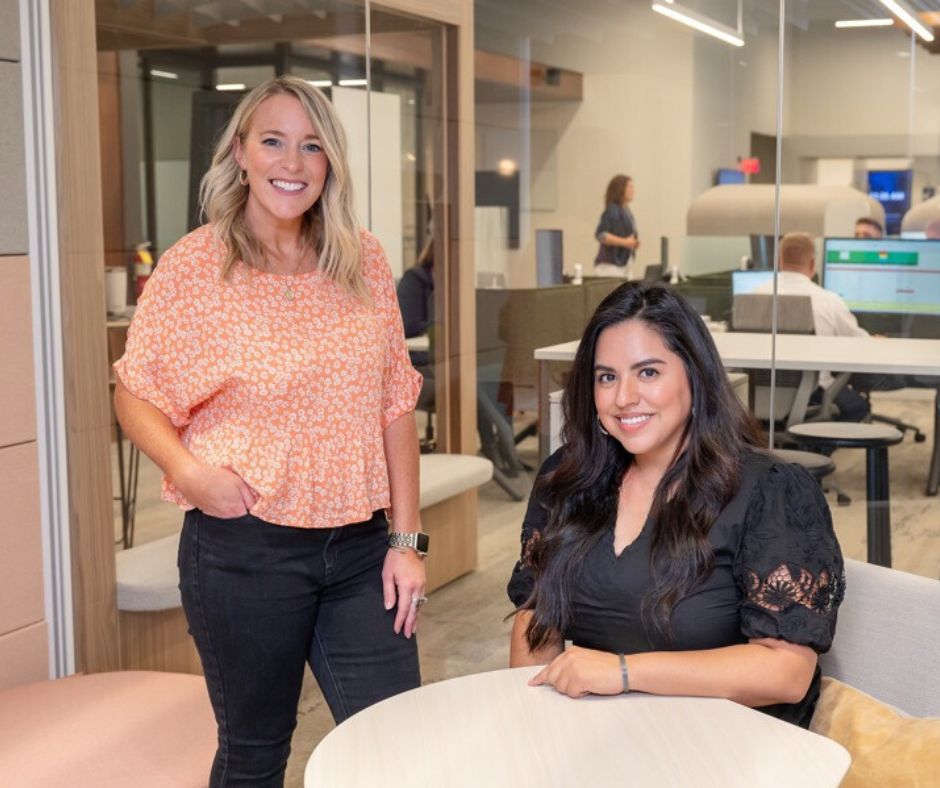
Interviewer (INT): Welcome to our Business Furniture blog! Today, we have the pleasure of speaking with two brilliant minds in higher education space design, Jenni Mendoza and Casey McPherson. Thank you both for joining us today.
Jenni Mendoza (JM): Thank you for having us! We’re excited to share insights into how universities adapt to the hybrid learning landscape.
Casey McPherson (CM): Absolutely! It’s an exciting time in the design world as universities transform their spaces to meet future demands.
INT: Let’s jump right in! Jenni, you’ve been with Business Furniture + Co for nine years, and Casey, you’ve been designing for higher education for fifteen years. Could you tell us about some of the projects you’ve worked on that are particularly relevant to hybrid learning?
JM: Certainly! Some projects I’ve been involved in include the Purdue School of Engineering, Ball State North Dining, Ball State North Residence Hall, and the Health Pavilion. These projects focused on creating dynamic environments seamlessly integrate physical and digital experiences. We aimed to provide faculty and staff with the tools to communicate effectively with students, whether they are on campus or joining virtually.
CM: In my experience, I’ve contributed to projects like Indiana University Hodge Hall, Indiana University Ferguson International Center, IUPUI Health Sciences, and IUPUI Van Nuys Medical Science Building. These projects emphasized flexibility, technology integration, and building meaningful on-campus experiences. The goal was to cultivate interactive spaces that inspire collaboration and foster community among students and staff.
INT: It’s clear that both of you have been instrumental in shaping modern university spaces. Jenni, could you share your thoughts on how the hybrid work model has impacted space design?
JM: The shift to hybrid learning has been remarkable. We’ve witnessed a tremendous increase in demand and capacity for adaptable spaces catering to in-person and remote learning experiences. Hybrid learning has forced us to reimagine how spaces are used, offering users more choice and flexibility in their learning journey.
INT: Casey, you mentioned prioritizing flexibility and technology integration. Could you expand on the significance of these aspects in the context of hybrid learning spaces?
CM: Absolutely. Flexibility is key because the way we learn is continuously evolving. Designing spaces that can adapt to different teaching and learning styles ensures they remain relevant and useful in the long term. As for technology integration, it’s no longer an option; it’s a necessity. Technology connects virtual learners to the physical classroom, allowing them to participate and collaborate, no matter their location, actively.
INT: Jenni, how do these adaptable and dynamic environments you’ve designed enhance the academic mission of universities?
JM: These spaces create an ecosystem where students, faculty, and staff can interact seamlessly. By fostering direct lines of communication between all stakeholders, we’re creating an inclusive environment that supports the academic mission of universities. It’s about bridging the gap between physical and digital experiences to ensure no one feels left out.
INT: Casey, engaging and interactive environments sound fascinating. How do you ensure these spaces encourage collaboration and community building?
CM: Collaboration is at the heart of modern education. We design spaces that facilitate group work, discussions, and creative brainstorming. By incorporating interactive technologies and flexible seating arrangements, we encourage students to engage actively with each other and build a strong sense of community within the university.
INT: As we conclude, what is the most exciting aspect of working in this evolving field of university space design for both of you?
JM: For me, it’s the opportunity to be at the forefront of innovation and help shape the future of education. Seeing our designs come to life and their positive impact on students and educators is incredibly rewarding.
CM: I completely agree. Being part of a transformative journey in higher education is truly inspiring. The constant challenge to innovate and create spaces that facilitate growth and learning keeps me motivated and passionate about what I do.
INT: Thank you for sharing your valuable insights and experiences today. We look forward to witnessing the continued evolution of these engaging and dynamic environments.
JM & CM: Thank you! It was a pleasure to be a part of this conversation. Next time we’ll do it over happy hour.
Be the first to comment